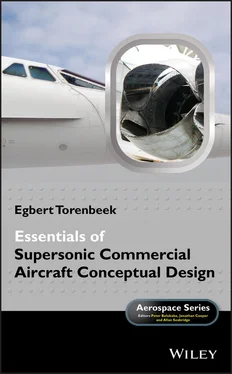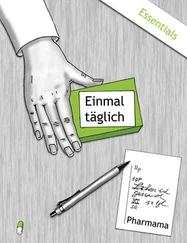1 Cover
2 Foreword
3 Series Preface
4 Preface
5 Acknowledgements
6 1 History of Supersonic Transport Aircraft Development 1.1 Concorde's Development and Service 1.2 SST Development Program 1.3 Transonic Transport Configuration Studies 1.4 US High Speed Research and Development Programs 1.5 European Supersonic Research Program 1.6 A Market for a Supersonic Commercial Aircraft? Bibliography
7 2 The Challenges of High‐speed Flight 2.1 Top Level Requirements (TLR) 2.2 The Need for Speed 2.3 Cruise Speed Selection 2.4 Aerodynamic Design Considerations Bibliography
8 3 Weight Prediction, Optimization, and Energy Efficiency 3.1 The Unity Equation 3.2 Early Weight Prediction 3.3 Fuel Weight 3.4 Take‐off Weight and the Weight Growth Factor 3.5 Example of an Early Weight Prediction 3.6 Productivity and Energy Efficiency Bibliography
9 4 Aerodynamic Phenomena in Supersonic Flow 4.1 Compressibility of Atmospheric Air 4.2 Streamlines and Mach Waves 4.3 Shock Waves 4.4 Normal Shock Waves 4.5 Planar Oblique Shock Waves 4.6 Curved and Detached Shock waves 4.7 Expansion Flows 4.8 Shock‐expansion Technique 4.9 Leading‐edge Delta Vortices 4.10 Sonic Boom Bibliography
10 5 Thin Wings in Two‐dimensional Flow 5.1 Small Perturbation Flow Bibliography
11 6 Flat Wings in Inviscid Supersonic Flow 6.1 Classification of Edge Flows 6.2 Linear Theory for Three‐dimensional Inviscid Flow 6.3 Slender Wings 6.4 Delta Wing 6.5 Arrow Wings 6.6 Slender Delta and Arrow Wing Varieties Bibliography
12 7 Aerodynamic Drag in Cruising Flight 7.1 Categories of Drag Contributions 7.2 Skin Friction Drag 7.3 Slender Body Wave Drag 7.4 Zero‐lift Drag of Flat Delta Wings 7.5 Wing‐alone Glide Ratio 7.6 Fuselage‐alone Drag Bibliography
13 8 Aerodynamic Efficiency of SCV Configurations 8.1 Interaction Between Configuration Shape and Drag 8.2 Configuration (A) 8.3 Configuration B 8.4 Full‐configuration Drag 8.5 Selection of the General Arrangement Bibliography
14 9 Aerodynamics of Cambered Wings 9.1 Flat Delta Wing Lift Gradient and Induced Drag 9.2 Warped Wings Bibliography
15 10 Oblique Wing Aircraft 10.1 Advantages of the Oblique Wing 10.2 Practical Advantages of the Oblique Wing 10.3 Oblique Wing Transport Aircraft 10.4 Oblique Flying Wing (OFW) 10.5 Conventional and OWB Configurations Compared 10.6 Conclusion Bibliography
16 Index
17 End User License Agreement
1 Chapter 1 Table 1.1 Characteristics of the first generation supersonic transport and th...
1 Chapter 1 Figure 1.1 The only supersonic commercial aircraft serving in commercial ope... Figure 1.2 The North American XB‐70 Valkyrie strategic bomber/reconnaissance... Figure 1.3 Configuration of the Boeing 2707‐300. Courtesy: Boeing. Figure 1.4 The M‐wing layout for cruising at Mach 1.20, generated by the STA... Figure 1.5 Design study of the European Supersonic Commercial Transport. Figure 1.6 Single spool MTF in operating mode for take‐off (top) and cruise ...
2 Chapter 2Figure 2.1 Reduction in traveling time with increasing cruise Mach number.Figure 2.2 Aerodynamic efficiency versus Mach number of subsonic and superso...Figure 2.3 Overall power‐plant efficiency of commercial transport.Figure 2.4 Potentially achievable flight efficiency of supersonic transport....
3 Chapter 3Figure 3.1 MTOW of Mach 2.0 SCT versus the range parameter and the wing weig...Figure 3.2 Definition of the profit potential [5, 6].Figure 3.3 Definition of the productivity [5, 6].
4 Chapter 4Figure 4.1 Streamlines and shock waves past a stationary airfoil in two‐dime...Figure 4.2 Propagation of sound waves emitted by a moving point source in a ...Figure 4.3 Stationary normal shock wave in uniform flow and properties of th...Figure 4.4 Planar oblique shock in two‐dimensional supersonic flow deflected...Figure 4.5 Diagram specifying the wave angle of a planar oblique shock as a ...Figure 4.6 Detached shock waves.Figure 4.7 Expansion of a supersonic flow around a sharp corner or a curved ...Figure 4.8 The Prandtl–Meyer function defining the supersonic two‐dimensiona...Figure 4.9 Pressure distribution, lift, and drag of sharp airfoils in two‐di...Figure 4.10 Model of vortices above a slender delta wing in subsonic flow.Figure 4.11 Supersonic aircraft surrounded in the near field by a complex pa...
5 Chapter 5Figure 5.1 Small flow perturbation and circular‐arc airfoil geometry.Figure 5.2 The lift gradient of two‐dimensional airfoils in subsonic and sup...Figure 5.3 Airfoil sections for minimum pressure drag in two‐dimensional sup...
6 Chapter 6Figure 6.1 Pressure distribution and streamlines for a flat rectangular wing...Figure 6.2 The flow around swept wings with constant chord.Figure 6.3 Basic delta wing geometry and definitions of flow parameters.Figure 6.4 Geometry and pressure distribution of a flat delta wing with stra...Figure 6.5 Geometry and pressure distribution of a delta wing with subsonic ...Figure 6.6 Lift gradient and induced drag flat delta wings according to line...Figure 6.7 Geometry of the flat arrow wing and effect of the notch ratio on ...Figure 6.8 Varieties of delta and arrow wings with straight leading edges an...
7 Chapter 7Figure 7.1 Scheme for decomposing the drag of a supersonic flight vehicle.Figure 7.2 Experimental data and interpolation methods on skin friction drag...Figure 7.3 Flow around and pressure distribution on a conical fore‐body.Figure 7.4 Von Kármán's ogive meridian line and variation of the drag coeffi...Figure 7.5 Meridian line of the Sears–Haack body.Figure 7.6 Behavior of the factor  for delta wings [1].Figure 7.7 Wave drag of delta wings with NACA modified four‐digit airfoils [...Figure 7.8 Definitions of the area ratio
for delta wings [1].Figure 7.7 Wave drag of delta wings with NACA modified four‐digit airfoils [...Figure 7.8 Definitions of the area ratio  and the thickness ratio
and the thickness ratio  .Figure 7.9 Generalized lift gradient for flat delta wings including non‐line...Figure 7.10 Induced drag of straight‐tapered delta and arrow wings.Figure 7.11 Fuselage body with a cylindrical mid‐section compared to a Sears...
.Figure 7.9 Generalized lift gradient for flat delta wings including non‐line...Figure 7.10 Induced drag of straight‐tapered delta and arrow wings.Figure 7.11 Fuselage body with a cylindrical mid‐section compared to a Sears...
8 Chapter 8Figure 8.1 Typical configurations for supersonic flight [1].Figure 8.2 Effect of the slenderness ratio on the drag breakdown of differen...Figure 8.3 Effect of the slenderness ratio and the cruise altitude on the ae...Figure 8.4 Effect of wing loading and cruise altitude on the aerodynamic eff...Figure 8.5 Geometry of three configurations designed to cruise at Mach 1.60 ...Figure 8.6 Area distribution and wave drag for three configurations of a Mac...
9 Chapter 9Figure 9.1 Basic drag subdivision at supersonic speeds.Figure 9.2 Linear theory compared with experiments of thin delta wings [17]....Figure 9.3 Lift gradient of flat delta wings predicted by non‐linear theory....Figure 9.4 Delta wing induced drag predicted by linear and non‐linear theory...Figure 9.5 Achievable leading‐edge thrust for flat delta wings and increased...Figure 9.6 Mean surface of a cambered slender wing [1].
10 Chapter 10Figure 10.1 The Ames Dryden AD‐1 experimental aircraft. Courtesy: NASA.Figure 10.2 Geometric advantage of the oblique wing.Figure 10.3 Advantages of the oblique wing for variable configurations.Figure 10.4 Advantages of the oblique wing for fixed geometry configurations...Figure 10.5 Example of a small supersonic oblique wing transport aircraft [1...Figure 10.6 Artist's concept of NASA's oblique flying wing.Figure 10.7 Airbus OFW design for a 250 passenger Mach 1.60 transport [19]....Figure 10.8 Geometry of an arrow‐wing HSCT configuration designed to carry 2...Figure 10.9 Proposed OWB transport aircraft depicted on the airfield.Figure 10.10 The oblique plane configuration in cruising flight.Figure 10.11 The oblique plane configuration in cruising and low‐speed fligh...
Читать дальше

 for delta wings [1].Figure 7.7 Wave drag of delta wings with NACA modified four‐digit airfoils [...Figure 7.8 Definitions of the area ratio
for delta wings [1].Figure 7.7 Wave drag of delta wings with NACA modified four‐digit airfoils [...Figure 7.8 Definitions of the area ratio  and the thickness ratio
and the thickness ratio  .Figure 7.9 Generalized lift gradient for flat delta wings including non‐line...Figure 7.10 Induced drag of straight‐tapered delta and arrow wings.Figure 7.11 Fuselage body with a cylindrical mid‐section compared to a Sears...
.Figure 7.9 Generalized lift gradient for flat delta wings including non‐line...Figure 7.10 Induced drag of straight‐tapered delta and arrow wings.Figure 7.11 Fuselage body with a cylindrical mid‐section compared to a Sears...










